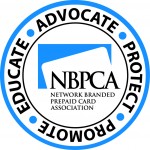Viewpoint: Separating Fact from Fiction: Consumers Union Campus Banking Report
Consumers Union, the policy and action division of Consumer Reports, recently issued a report on student cards, Campus Banking Products: College Students Face Hurdles to Accessing Clear Information and Accounts that Meet Their Needs. The report addressed several financial tools targeted to students, including prepaid student or campus cards. Unfortunately, this report fails to make the grade when it comes to fairness, reasonability and fact-based analysis.
 Overall, Consumers Union makes incorrect assumptions and implies that students pay more for student cards than for traditional banking products offered off campus. But these assumptions are supported by outdated or limited data and, in some cases, no data at all.
Overall, Consumers Union makes incorrect assumptions and implies that students pay more for student cards than for traditional banking products offered off campus. But these assumptions are supported by outdated or limited data and, in some cases, no data at all.
FICTION: “Student cards are more expensive than non-campus products.”
FACT: Students come from all walks of life and range from highly sophisticated to complete novices when it comes to managing money. Consumers Union claims a high percentage of students have existing banks accounts when they arrive at school. For a variety of reasons, many students will begin college without an existing banking relationship. The unbanked student may be faced with having to cash the check for his Title IV funds at a check-cashing location, where he may pay check-cashing fees ranging from 1 to 3 percent of the face amount of the check. After cashing the check, the student must then buy money orders to pay rent, bills and utilities, or he could head all over town to pay bills in person with cash. If the student loses his wallet, the funds are gone, and he has no way of recovering his loss. Packed with inconvenience, security risks and the possibility of fraud and loss, a cash-based system for personal finances is probably the most expensive way to handle this critical part of college life.
Regardless of backgrounds, students and their parents who choose a student card product do so because it provides real value. Consumers Union admits that most of the student cards reviewed can be used for low or no fees,[1] but it also broadly claims that student cards are more expensive than other products available to students. It lists the fees for 16 products offered on college and university campuses but offers no analysis of how students are using the cards and the actual fees they incur.[2] When discussed in context, after full disclosure of all terms and conditions, a student card, is, in many cases, a less expensive option for students than basic or traditional checking accounts.[3]
FICTION: “Student cards are not regulated nor do they offer strong consumer protections.”
FACT: Current DOE requirements outline that prepaid cards that disburse Title IV funds must have FDIC insurance. Regulation E protections include consumer disclosures and consent by the student/parent. They also are subject to UDAAP and are regulated by various state agencies.
NBPCA supports student access to a variety of Title IV disbursement options that are protected by strong federal consumer protections and that are chosen only with the consent of the student and/or parent and that fulfill the financial needs of the student.
FICTION: “It’s easy to rack up huge fees and difficult to access cash for free.”
FACT: The Consumers Union report found that the vast majority of student cards charged no monthly fees, regardless of account balance. In many cases, student cards are an affordable and convenient option compared to a checking account.
The DOE’s regulations protect students from high user fees by ensuring that no fees are incurred in opening an account or receiving a student card. The regulations also require that students have access to underlying funds at conveniently located ATMs on or adjacent to campus. Prior to opening an account, students or parents must be informed of the terms and conditions associated with accepting and using the account, including any fees and other costs associated with the account.
FICTION: “Students can rack up fees by repeatedly overdrafting their accounts.”
FACT: With regard to overdraft protection, the NBPCA is not aware of any current student card product that assesses an overdraft fee. However, if a card included an overdraft feature, current bank regulations require the cardholder to opt-in for overdraft protections—regardless of card type.
FICTION: “DOE needs to make direct payments to students via its own payment card.”
FACT: Consumers Union makes it clear that it supports the DOE offering its own financial accounts and access devices (debit or prepaid) for students to receive Title IV funds. The NBPCA respectfully believes that a government agency issuing its own student card is not advisable for several reasons.
First, student cards already exist in an incredibly competitive market to offer students the most innovative and convenient financial services products. Supplanting this market with a government-issued product would hurt students by eliminating competition; thereby, stunting the growth of new and innovative student-focused products.
Second, a government-issued student card attempts to make a one-size-fits-all product work for all colleges and universities and their students. By contrast, the current system enables schools to work with myriad businesses to tailor programs that meet both that school’s particular needs and its student body’s.
Student cards are a win-win for students and schools. They provide a safe and convenient payments option and, in most cases, are less expensive to use than traditional checking accounts that average $6-12 a month in fees, according to the GAO. Both GAO and DOE reports have shown that students overwhelmingly prefer a card disbursement option if it is available to them.[4] According to the U.S. Treasury, it costs $1.03 to issue a paper paycheck and only 10.5 cents to issue an electronic payment.[5] Those savings help schools funnel money back to students.
Getting the facts straight when it comes to student cards is critical as the DOE examines new rules with respect to these products. NBPCA and our members are concerned that the DOE’s most recent proposal regarding student cards may have the unintended consequence of limiting students’ options and access to low-cost banking services, and also may make it more expensive for colleges and universities to distribute federal funds to their students in a timely fashion. The NBPCA has urged the DOE to work with stakeholders from the financial services industry, education community, consumer and student groups, financial regulators and Congress, as it completes its work on this issue to provide clarity, transparency and confidence to all parties affected by the proposal. This is the only way the DOE can reach the appropriate balance between protecting the integrity of Title IV funds, consumer protections, and student choice and access to low-cost banking services.
[1] Report, page 1
[2] Report, page 11
[3] United States Government Accountability Office, Report to the Chairman, Committee on Health,
Education, Labor, and Pensions, U.S. Senate: College Debit Cards, Actions Needed to Address ATM
Access, Student Choice, and Transparency, February 2014.
[5] Ibid.
Brian Tate is the NBPCA’s director of government relations. A graduate of the Howard University School of Law, the George Washington University (M.A.) and King’s College (B.A.) in Pennsylvania, Brian was a White House intern during the Clinton Administration in 1996. Prior to joining NBPCA in 2013, he was vice president of banking at the Financial Services Roundtable. He began his career in financial services working as an advocate for the credit union industry. Brian may be reached at [email protected].










































